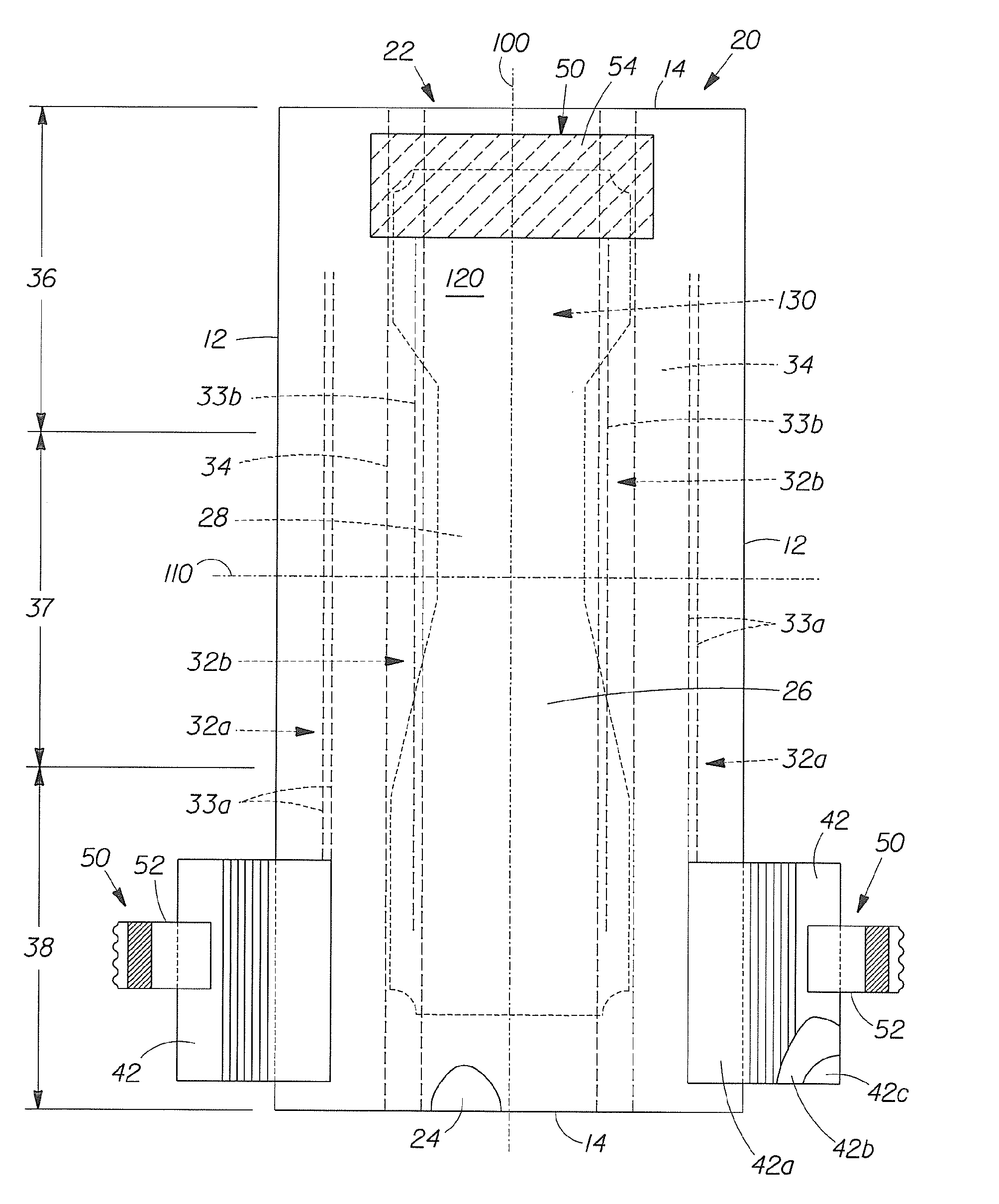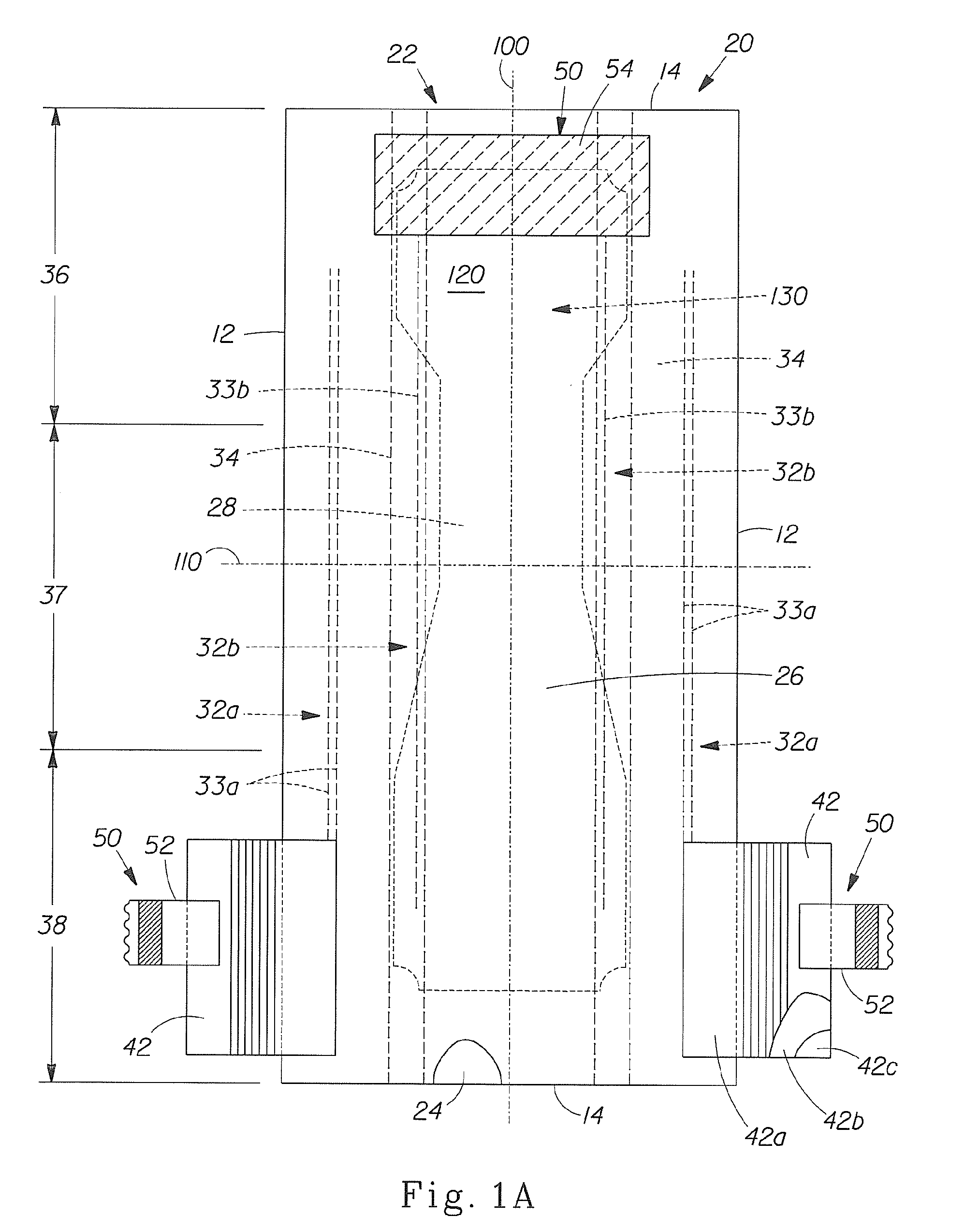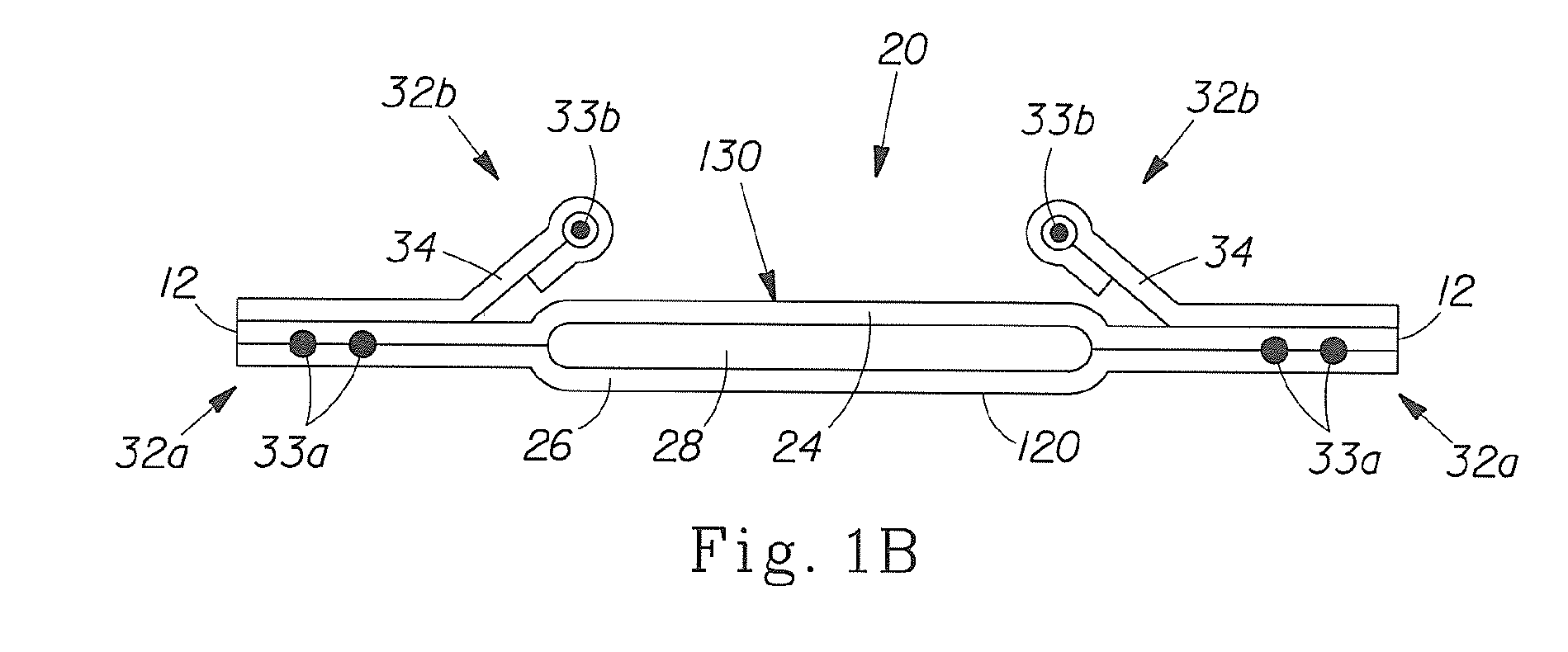Absorbent Article Comprising A Synthetic Polymer Derived From A Renewable Resource And Methods Of Producing Said Article
a synthetic polymer and absorbent article technology, applied in the field of absorbent articles, can solve the problems of significant impact on the price of absorbent articles, consumers are hesitant to purchase products made from limited non-renewable resources such as petroleum and coal, and a great deal of effort has been spent in the development of materials exhibiting optimal performance characteristics
- Summary
- Abstract
- Description
- Claims
- Application Information
AI Technical Summary
Benefits of technology
Problems solved by technology
Method used
Image
Examples
example 1
[0259]A suitable polyolefin may be created according to the following method. An exemplary renewable resource is corn. The corn is cleaned and may be degerminated. The corn is milled to produce a fine powder (e.g., cornmeal) suitable for enzymatic treatment. The hydrolysis (e.g., liquification and saccharification) of the corn feedstock to yield fermentable sugars is well known in the agricultural and biofermentation arts. A suitable preparation pathway is disclosed in U.S. Pat. No. 4,407,955. A slurry of dry milled corn is created by adding water to the milled corn and an aqueous solution of sulfuric acid (98% acid by weight). Sufficient sulfuric acid should be added to provide a slurry pH of about 1.0 to about 2.5. The slurry is heated to about 140° C. to about 220° C. and pressurized to at least about 50 psig; however, pressures from about 100 psig to about 1,000 psig may result in greater conversion of the starch to fermentable sugars. The slurry is maintained at the ...
example 2
[0264]Preparation of Glycerol
[0265]Canola oil is obtained by expressing from canola seeds. Approximately 27.5 kg of canola oil, 5.3 kg methanol and 400 g sodium methoxide are charged to a 50 L round-bottomed flask equipped with a heating mantle, thermometer, nitrogen inlet, mechanical stirrer, and reflux condenser. A glass eduction tube (dip tube) is situated so that liquid can be removed from the bottom of the flask by means of a peristaltic pump. The flask is purged with nitrogen and the mixture in the flask is heated to 65° C. with stirring. The mixture is allowed to reflux for 2.5 hours, then the heat is turned off, agitation is stopped and the mixture allowed to settle for 20 minutes. The bottom layer is pumped out of the flask and kept for further use (Fraction 1). Approximately 1.4 kg methanol and 230 g sodium methoxide are added to the flask, agitation is resumed, and the mixture refluxed at 65° C. for another 2 hours. The heat is turned off, approximat...
PUM
| Property | Measurement | Unit |
|---|---|---|
| mol % | aaaaa | aaaaa |
| surface tension | aaaaa | aaaaa |
| storage modulus | aaaaa | aaaaa |
Abstract
Description
Claims
Application Information
 Login to View More
Login to View More - R&D
- Intellectual Property
- Life Sciences
- Materials
- Tech Scout
- Unparalleled Data Quality
- Higher Quality Content
- 60% Fewer Hallucinations
Browse by: Latest US Patents, China's latest patents, Technical Efficacy Thesaurus, Application Domain, Technology Topic, Popular Technical Reports.
© 2025 PatSnap. All rights reserved.Legal|Privacy policy|Modern Slavery Act Transparency Statement|Sitemap|About US| Contact US: help@patsnap.com



